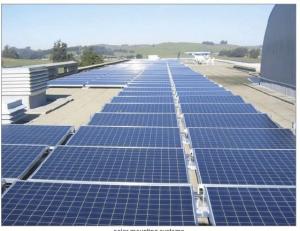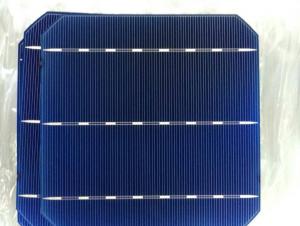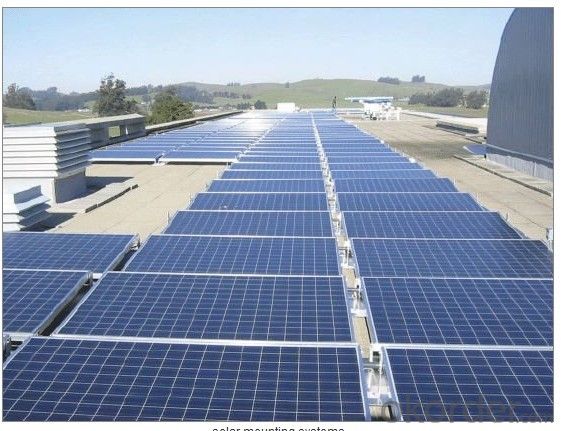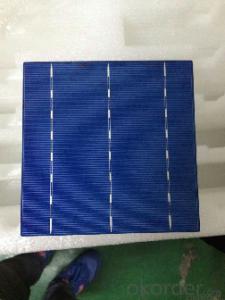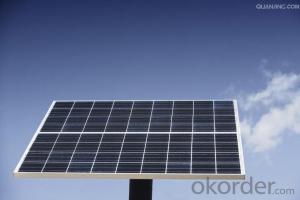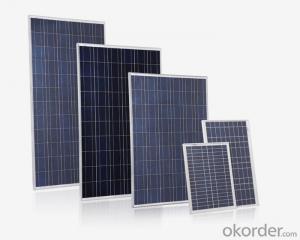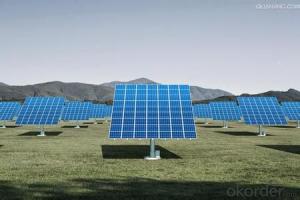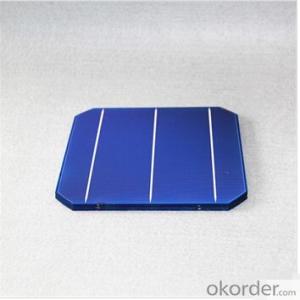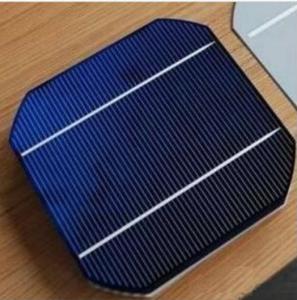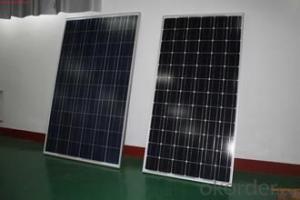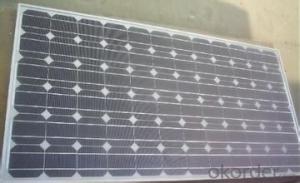Laser Scribing Monocrystalline Silicon Solar Cells
- Loading Port:
- China Main Port
- Payment Terms:
- TT or LC
- Min Order Qty:
- -
- Supply Capability:
- -
OKorder Service Pledge
OKorder Financial Service
You Might Also Like
Quick Details
| Model Number: | monocrystalline solar cell 156x156 | ||||
| Material: | Monocrystalline Silicon | Size: | 156x156mm | Number of Cells: | 1 |
| Max. Power: | 4.6 | Color: | Blue | Main Bus bar: | 3BB |
| Grade: | B-Grade | Thickness: | 180/200 ± 20μm | Voltage: | 0.508V-0.53V |
| Efficiency: | 19.26% | Product: | In stock | Trade term: | Exw Shenzhen |
Packaging & Delivery
| Packaging Detail: | Neutral package |
| Delivery Detail: | 8-15 working days |
Specifications
1) Buy solar cells
2) mono solar cells
3) monocrystalline silicon solar cell price
4) Manufacturer Price
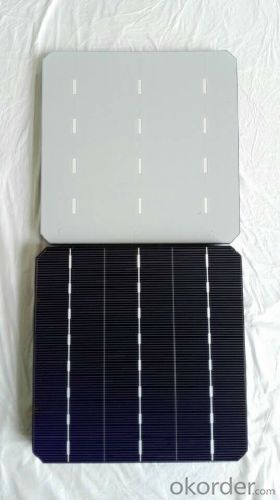
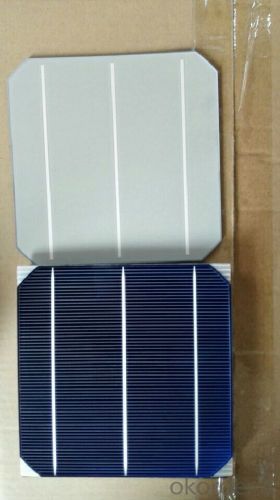
Most solar modules are currently produced from crystalline silicon (c-Si) solar cells made of multicrystalline and monocrystalline silicon. In 2013, crystalline silicon accounted for more than 90 percent of worldwide PV production, while the rest of the overall market is made up of thin-film technologies using cadmium telluride, CIGS and amorphous silicon Emerging, third generation solar technologies use advanced thin-film cells. They produce a relatively high-efficiency conversion for the low cost compared to other solar technologies. Also, high-cost, high-efficiency, and close-packed rectangular multi-junction (MJ) cells are preferably used in solar panels on spacecraft, as they offer the highest ratio of generated power per kilogram lifted into space. MJ-cells are compound semiconductors and made of gallium arsenide (GaAs) and other semiconductor materials. Another emerging PV technology using MJ-cells is concentrator photovoltaics (CPV).
- Q: How do solar cells perform in areas with high levels of electromagnetic interference?
- Solar cells can be affected by high levels of electromagnetic interference (EMI), which can lead to reduced performance. EMI, such as radio frequency interference or electromagnetic radiation from nearby electronic devices, can disrupt the proper functioning of solar cells by interfering with their ability to convert sunlight into electricity. Therefore, in areas with high EMI levels, solar cells may experience decreased efficiency and output. Implementing shielding techniques and using quality components can help mitigate the impact of EMI on solar cell performance.
- Q: Do you believe you can make a solar cell by using kitchenware?
- No, I don't believe it at all.
- Q: Can solar cells be used in medical devices?
- Yes, solar cells can be used in medical devices. Solar cells can provide a renewable and sustainable source of energy for various medical devices, such as remote monitoring systems, wearable devices, and even implantable devices. They can help eliminate the need for frequent battery replacements and provide continuous power supply, making them particularly useful in remote or resource-limited areas.
- Q: What is the role of surge suppressors in solar cell systems?
- The role of surge suppressors in solar cell systems is to protect the system from voltage spikes and surges caused by lightning strikes, power surges, or other electrical disturbances. These suppressors help in preventing damage to the solar panels, inverters, and other components of the system, ensuring their longevity and efficient operation.
- Q: Can solar cells be used for powering communication systems?
- Yes, solar cells can be used for powering communication systems. Solar cells convert sunlight into electricity, which can be used to power various devices, including communication systems. This makes them a sustainable and environmentally-friendly option for powering such systems in remote or off-grid locations.
- Q: How are solar cells integrated into building designs?
- Solar cells can be integrated into building designs in several ways. One common method is to install solar panels or modules on the roof, which capture sunlight and convert it into electricity. These panels can be mounted on top of the roof or integrated into the roofing material itself. Another approach is to incorporate solar cells into windows or building facades, creating solar glazing that generates electricity while still allowing natural light to enter the building. Additionally, solar cells can be integrated into shading devices such as awnings or louvers, providing both energy generation and sun control. Overall, integrating solar cells into building designs allows for the efficient utilization of renewable energy and reduces dependency on traditional power sources.
- Q: Can solar cells be used for off-grid power systems?
- Yes, solar cells can definitely be used for off-grid power systems. Solar cells, also known as photovoltaic cells, convert sunlight directly into electricity and can be used to generate power in remote locations that are not connected to the main power grid. These cells can be installed on rooftops, in open fields, or even on portable devices to generate electricity for various off-grid applications such as powering homes, cabins, or other remote facilities.
- Q: Can solar cells be used for powering communication towers?
- Yes, solar cells can be used for powering communication towers. Solar energy can be harnessed using photovoltaic cells, which convert sunlight into electricity. These cells can generate power throughout the day, making them a reliable source of energy for communication towers that require continuous operation. Additionally, solar cells can be integrated with batteries to store excess energy for use during nighttime or cloudy periods, ensuring uninterrupted power supply to communication towers.
- Q: How do solar cells affect the environment?
- Solar cells have a positive impact on the environment as they generate electricity from a renewable source, the Sun, without emitting greenhouse gases or harmful pollutants. This reduces reliance on fossil fuels, mitigates air and water pollution, and contributes to the fight against climate change. Additionally, solar energy does not require water for operation, which helps conserve this precious resource. Although there are some environmental concerns related to the production and disposal of solar cells, the overall benefits greatly outweigh these drawbacks.
- Q: How does a solar cell work?
- A solar cell works by converting sunlight into electricity through the photovoltaic effect. When sunlight hits the solar cell, it excites the electrons in the cell's semiconductor material, causing them to flow and create an electric current. This current can then be harnessed and used to power various devices or stored in batteries for later use.
Send your message to us
Laser Scribing Monocrystalline Silicon Solar Cells
- Loading Port:
- China Main Port
- Payment Terms:
- TT or LC
- Min Order Qty:
- -
- Supply Capability:
- -
OKorder Service Pledge
OKorder Financial Service
Similar products
Hot products
Hot Searches
Related keywords
